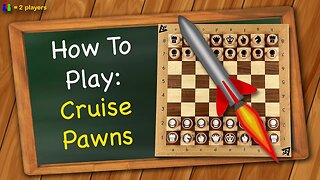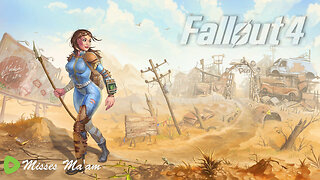How to play Star Trek Tridimensional Chess
Learn the rules to the Star Trek Tridimensional Chess game quickly and concisely - This video has no distractions, just the rules. For a refresher of the original Chess rules, check out this video: https://youtu.be/fKxG8KjH1Qg
Play chess online for free here:
https://link.triplesgames.com/Play-Chess-Online
(As an chess.com affiliate we earn from qualifying subscriptions)
Don't own the game? Buy it here:
USA - https://amzn.to/3s397V4
Canada - https://amzn.to/3I4TRwb
UK - https://amzn.to/3HeJgOl
Australia - https://amzn.to/3sJTz7G
(These Amazon Affiliate links directly supports me)
RULES:
The rules are the same as regular chess except for these changes. The bottom level board is white’s board and the top level is black’s board. The middle level is the neutral board. The three levels are suspended one above the other and horizontally offset by half their width so that half of the squares on any board are directly over or under half of the squares on the next level above or below it. This layout may not always be perfectly achieved visually but this is how they officially overlap. You can remember that squares line up by color, for example: a red square is always directly above or below another red square.
The small moveable platforms are called attack boards. The attack boards are placed on the rear pin positions of the white and black boards oriented so that the corner colors match. Setup white’s pawns on the 2nd row of both their main board and attack boards. On white’s main board, on the closest row, setup knight, bishop, bishop, knight. On the attack boards, place rooks on the rear-outer corners, the queen on its matching color, and the king on the other. Mirror this setup for black.
On your turn, instead of moving a piece, you may move an attack board. To move an attack board, it must be occupied by exactly 1 piece. Whichever player’s piece occupies the attack board, that player has the ability to move it. An attack board can move to another pin on the same row or column on its current board, or it can move vertically to a pin on a board above or below it. When moving vertically, it moves to the closest pin. If there is a tie for the closest pin then you may pick which pin to move to. When you move an attack board you may also rotate it 180 degrees if you want. If you do, be sure that the overlapping colors from the boards above and below it still match. Whatever piece is on it rotates with the board. You may not move an attack board to the same pin as another attack board and you may not rotate an attack board without moving it to another pin.
All pieces have their normal chess movement with the following considerations. When moving a piece laterally, along the horizontal plane of a board, the squares located directly above or below each square are considered to be in the same position on a single horizonal plane. It is as if you are above, looking down and treating all the individual boards as one single chess board. In this view, some of the squares would be allowed to hold multiple pieces simultaneously.
Flip the view back to 3 dimensions, and you can see how this is possible because of the vertically overlapping boards. Typically squares will only have 2 boards overlapping, however, due to the location of the attack boards, you can have up to 4 boards overlapping. The number of overlapping squares determines how many pieces can share that square within the vertical space.
A piece may change levels so long as the horizontal path of that piece’s normal move is legal, regardless of its vertical movement. To move a piece to a different level, that piece must first move along its horizontal path, one square at a time. At any point on the path the piece may be repositioned to an unoccupied square above or below the very next square on the path. Then the horizontal move continues and this process repeats until the desired destination square is reached. A piece may leave the edge of a board if there is an unoccupied square above or below the imaginary void square the piece is moving to. Move that piece to that physical square then you may continue its horizontal move. Pieces may not travel into the void beyond that next single square, you must always calculate the path of movement 1 square at a time following these movement rules. Once a piece leaves a level, it may not return to that same level in the same move.
For example, a rook can travel up multiple boards in a single move, in a very specific way, so as to dodge several pieces that are in the way. If there was a wall of pieces all on the same vertical square, blocking the path, the rook may not travel out into the void then up to dodge it.
Knights are one of the exceptions. They are allowed to jump through the void so long as they land on a physical square. The second exception is that Queens and rooks are allowed to travel across void space from one attack board to another attack board...
-
 2:21
2:21
Triple S Games
5 months ago $0.01 earnedHow to play Cruise Pawns
635 -
 1:03:30
1:03:30
In The Litter Box w/ Jewels & Catturd
18 hours agoO'Keefe Exposes The CIA | In the Litter Box w/ Jewels & Catturd - Ep. 559 - 5/2/2024
27.5K14 -
 LIVE
LIVE
Major League Fishing
2 days agoBass Pro Tour LIVE - Stage Three - Day 1
1,020 watching -
 LIVE
LIVE
MissesMaam
5 hours agoFinally Doing Ironworks Missions | Fallout 4 ✨ (pt. 11) 💚
710 watching -
 1:06:30
1:06:30
Lee Camp
3 hours agoLIVE: Pro-Israel Mobs & The State Cooperate To Crush Dissent!
12.8K -
 1:57:39
1:57:39
Matt Kim
1 day agoShaneyyricch live in Studio
8.98K3 -
 2:57:41
2:57:41
The Charlie Kirk Show
4 hours agoDid Republicans Ban the Bible? + Gone to the Dogs | Rep. Davidson, O'Keefe, Knowles | LIVE 5.2.24
74.6K104 -
 1:43:16
1:43:16
John Burk
3 hours agoAntisemitism bill, Biden in league with big tech on covid, and Al Sharpton returns.
7.56K11 -
 1:38:54
1:38:54
James Kaddis
12 hours agoThe World Just Changed Overnight! Did You Notice?
11.9K4 -
 38:35
38:35
Standpoint with Gabe Groisman
3 hours agoEp. 22. Knesset Speaker on The Challenging Times in Israel. Amir Ohana
23.6K18